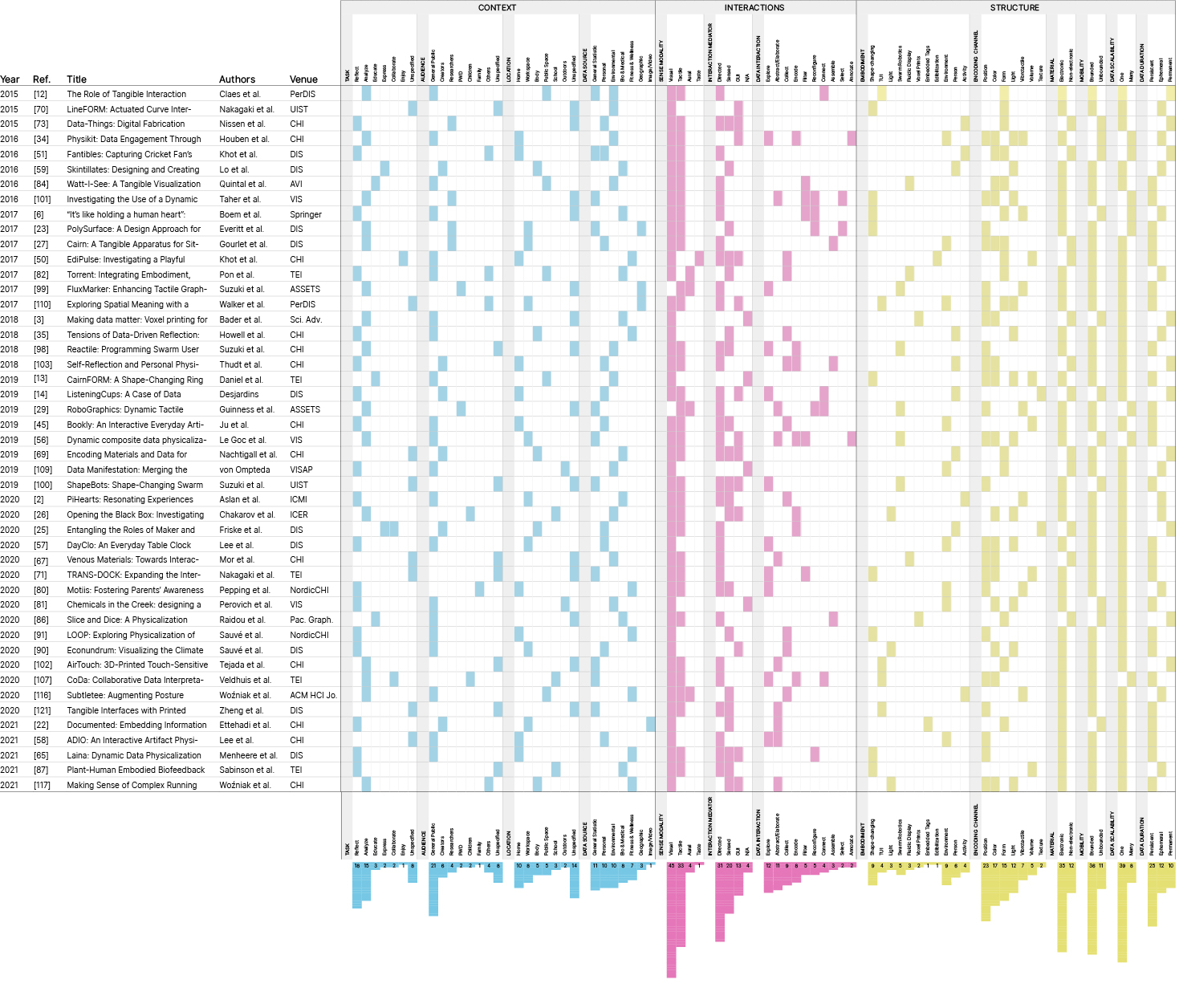INTRODUCTION
Designing a data physicalization requires a myriad of different considerations. Despite the cross-disciplinary nature of these considerations, research currently lacks a synthesis across the different communities data physicalization sits upon, including their approaches, theories, and even terminologies. To bridge these communities synergistically, we present a design space that describes and analyzes physicalizations according to three facets: context (end-user considerations), structure (the physical structure of the artifact), and interactions (interactions with both the artifact and data). We construct this design space through a systematic review of 47 physicalizations and analyze the interrelationships of key factors when designing a physicalization. This design space cross- pollinates knowledge from relevant HCI communities, providing a cohesive overview of what designers should consider when creating a data physicalization while suggesting new design possibilities. We analyze the design decisions present in current physicalizations, discuss emerging trends, and identify underlying open challenges.
This web gallery is a supplement to the survey results (figure down below) discussed in the paper.
HOW TO CITE
S.S. Bae, C. Zheng, M.E. West, E. Do, S. Huron, and D. Szafir."Making Data Tangible: A Cross-disciplinary Design Space for Data Physicalization". In: Proceedings of the 2022 CHI Conference on Human Factors in Computing Systems. New Orleans, Louisana, 2022.
SUPPLEMENTAL MATERIALS
Codebook Definitions [download]
Coding Sheet [download]
NOTES
The number of paper matches for certain data interactions (i.e., explore, abstract, and encode) will differ from Figure 1 in the paper and the website gallery. Certain physicalizations showcased multiple ways to express one data interaction (e.g., Robographics by Guinness et al., 2019 had two distinct methods for Abstract/Elaborate), which is not accounted for in the website gallery. For more information, please refer to the coding sheet (Tab: Interactions).
Template is modified the Locomotion Vault (Apache License, Version 2.0)
